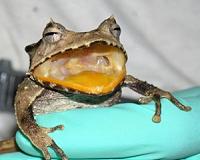| . |  |
. |
College Park MD (SPX) Jul 22, 2010 Recently, academic debate has been swirling around the existence of unusual quantum mechanical effects in the most ubiquitous of phenomena, including photosynthesis, the process by which organisms convert light into chemical energy. In particular, physicists have suggested that entanglement (the quantum interconnection of two or more objects like photons, electrons, or atoms that are separated in physical space) could be occurring in the photosynthetic complexes of plants, particularly in the pigment molecules, or chromophores. The quantum effects may explain why the structures are so efficient at converting light into energy - doing so at 95 percent or more. In a paper in The Journal of Chemical Physics, which is published by the American Institute of Physics, these ideas are put to the test in a novel computer simulation of energy transport in a photosynthetic reaction center. Using the simulation, professor Shaul Mukamel and senior research associate Darius Abramavicius at the University of California, Irvine show that long-lived quantum coherence is an "essential ingredient for quantum information storage and manipulation," according to Mukamel. It is possible between chromophores even at room temperature, he says, and it "can strongly affect the light-harvesting efficiency." If the existence of such effects can be substantiated experimentally, he says, this understanding of quantum energy transfer and charge separation pathways may help the design of solar cells that take their inspiration from nature.
Share This Article With Planet Earth
Related Links American Institute of Physics Darwin Today At TerraDaily.com
 Frog Killer Caught In The Act
Frog Killer Caught In The ActWashington DC (SPX) Jul 21, 2010 The first before-and-after view of an amphibian die-off has just been published by scientists working at the Smithsonian Tropical Research Institute in Panama. Like a wave, the fungal disease that wipes out frogs-chytridiomycosis-advances through the Central America highlands at a rate of about 30 kilometers per year. After the disappearance of Costa Rica's golden frogs in the 1980s, Karen ... read more |
|
| The content herein, unless otherwise known to be public domain, are Copyright 1995-2010 - SpaceDaily. AFP and UPI Wire Stories are copyright Agence France-Presse and United Press International. ESA Portal Reports are copyright European Space Agency. All NASA sourced material is public domain. Additional copyrights may apply in whole or part to other bona fide parties. Advertising does not imply endorsement,agreement or approval of any opinions, statements or information provided by SpaceDaily on any Web page published or hosted by SpaceDaily. Privacy Statement |